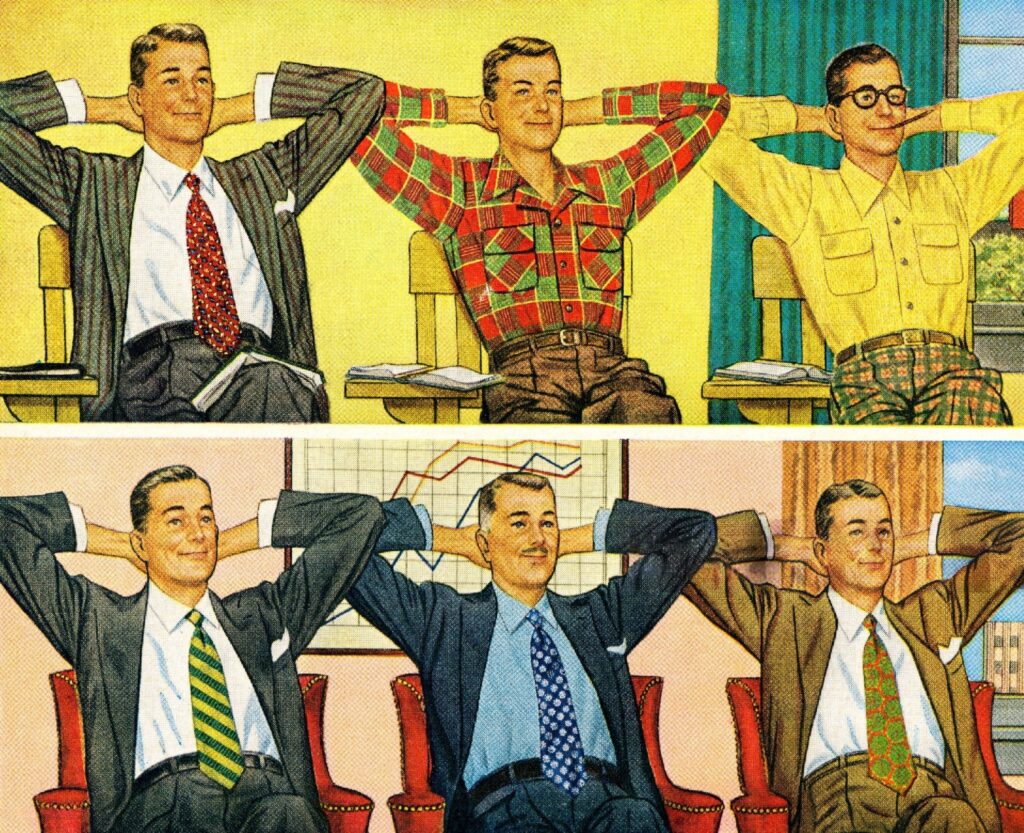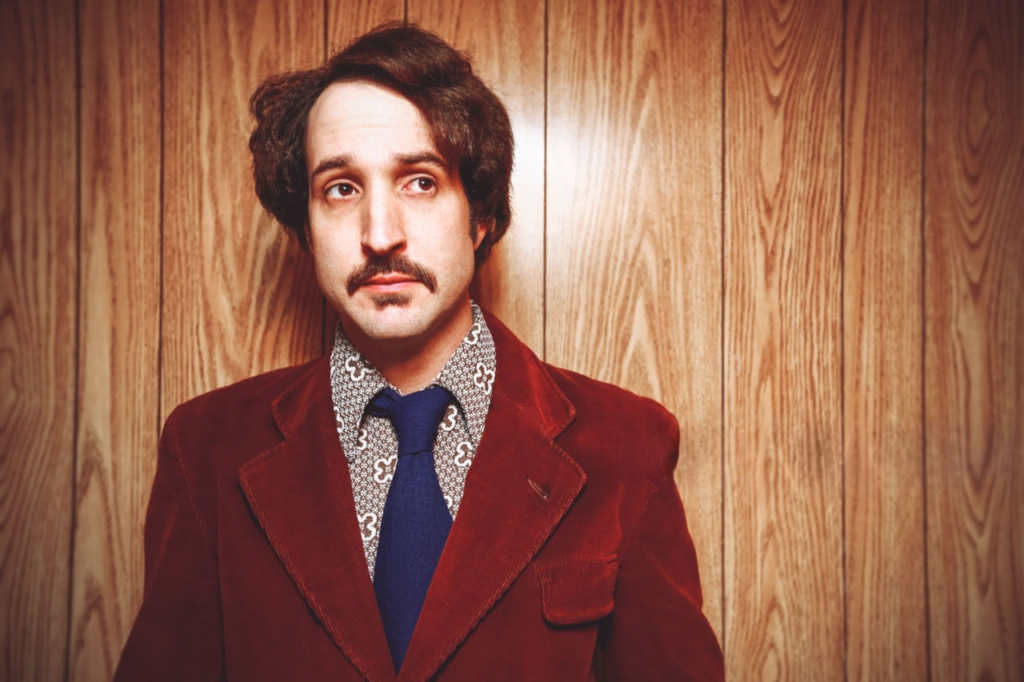Contents
- 1 The Origins of Men’s Ties
- 2 Early History: The First Neckwear Appearances
- 3 The Cravat: A Fashion Revolution
- 4 18th and 19th Century: The Evolution of Neckties
- 5 20th Century: The Rise of the Modern Tie
- 6 The Evolution of Tie Styles
- 7 The Cultural Significance of Ties
- 8 Modern Trends and How to Wear Ties Today
- 9 External Resources for Tie Enthusiasts
- 10 The Timeless Appeal of Ties
The Origins of Men’s Ties
The question “When did men start wearing ties?” delves into the fascinating history of men’s fashion. Ties have a long history that entails fashion, tradition, and the evolution of cultures. From ancient civilizations to the boardrooms of modern corporations, ties have served as one steadfast symbol of grace, professionalism, and personal flair. Though some may argue about the true origins of the modern tie, it is through history that neckwear can be dated back to times as early as ancient China and Rome. A comprehension of when ties began to adorn men requires rummaging into history, the influence of fashion, and changes in aesthetics for menswear. From form to fabric to the underlying meaning, a tie has its evolution based on the social and professional setup during each epoch. In reality, the trip from the simplest cloth around one’s neck to the modern silk tie is truly filled with interesting transitions that show how men’s fashion has taken its cue from war, politics, and the cultural tide.
Early History: The First Neckwear Appearances

One of the earliest recorded instances of neckwear being worn by men dates back to 210 B.C. when China’s first emperor Qin Shi Huang buried his famous Terracotta Army. Among the statues of soldiers, they found depictions of warriors with knotted cloth around their necks, thus showing the early use of neckwear. Around the same time, the Romans also followed a similar trend they called the “focal,” or a scarf worn by soldiers to keep out the cold and to identify their rank. This practice laid the foundation for future neckwear styles.
The Cravat: A Fashion Revolution
The cravat was a sophisticatedly knotted piece of cloth around the neck, which appeared in the age of the Renaissance, courtesy of Croatian mercenaries back in the 17th century. When these soldiers served in France, their distinctive neckwear caught the eye of French aristocrats, who promptly adopted and refined it into a fashion statement. King Louis XIV of France was particularly fond of the cravat, making it a staple of European noble fashion. The word “cravat” itself is derived from “Croat,” a nod to its Croatian origins.
18th and 19th Century: The Evolution of Neckties

By the 18th and 19th centuries, cravats became very elaborate. The Industrial Revolution had a great impact on standardizing men’s attire, including neckwear. This is when the ascot tie, a type of cravat but wider and structured, managed to work its way into the mainstream of British high society, especially for formal gatherings. In America, neckties became synonymous with professionalism and social standing. The turn to more structured and modern neckwear came towards the end of the 19th century with the bow tie and the four-in-hand tie. Of the ties, the four-in-hand became the forerunner of today’s standard necktie. The name of the four-in-hand tie is taken from a popular English club, whose carriage drivers would fasten their scarves with a simple knot, which was widely used due to ease and style in wearing.
20th Century: The Rise of the Modern Tie
By the early 20th century, ties had become a staple of men’s wardrobes. The modern long tie came in during the 1920s when designers brought out its width, length, and fabrics. Ties in silk became quite popular, and patterns became an important feature in men’s attire. Colorful wide ties dominated the 1930s and 1940s, while slim and more subdued designs became the signature of the 1950s. Hollywood and pop culture did their part to tie fashion, with actors like Cary Grant and Frank Sinatra leading the way in setting trends to be followed coast to coast. In the 1960s and 1970s, bold, wide ties studied with dynamic prints emerged, whereas in the 1980s, true to power dressing, the tie was a status symbol for businessmen. Slimmer ties returned in the 1990s and the early 2000s with European designers, reflecting a much more minimalist vibe. The modern tie has now changed to be one showing taste and refinement, worn for both corporate life and formal or even casual occasions.
The Evolution of Tie Styles
The evolution of tie styles can be summarized in the following table:
| Era | Style | Notable Features |
|---|---|---|
| Ancient China & Rome | Focalia | Protective neck cloth for soldiers |
| 17th Century | Cravat | Ornate lace and silk neckwear |
| 18th-19th Century | Ascot & Four-in-Hand | Formal and structured designs |
| Early 20th Century | Bow Tie & Long Tie | Refinement of tie length and materials |
| 1920s-1940s | Wide Silk Ties | Bold patterns, Hollywood influence |
| 1950s-1970s | Skinny Ties & Bold Prints | Fashion experimentation and corporate influence |
| 1980s-Present | Versatile Styles | Mix of classic, slim, and bold ties |
The Cultural Significance of Ties
Ties have always meant much more than just an easy way to accessorize hence denote authority, classiness, and identity. Question:- WHEN DID MEN START WEARING TIES? is more than simply a question of history, it is proof that industry can change in response to society. The tie is still a cornerstone in fashion for men, kept up-to-date each year through trends while revolutionary demands. Whether you are in an office setting and choose a traditional Windsor knot or going out for some drinks with a casual tie blazer men continue to add personality with their neckwear selections.
Modern Trends and How to Wear Ties Today
This is why men interested in fashion should learn about the history of ties so that they can appreciate and experiment with new twists on contemporary looks. Now, ties are available in a vast array of colors and styles manufactured from various materials to be worn by a man during any occasion. From a visibly loud statement for some black tie event to casual wear wearing knit ties, the options are limitless. By matching ties with a variety of suits, shirts, and accessories, men can cultivate their own individual looks that convey something about them as people alongside what they want to achieve professionally.
External Resources for Tie Enthusiasts
If you are inclined to explore the history and sartorial aspects of ties further, other sources like the Fashion Collection provide many historical pieces at institutions such as The Victoria and Albert Museum or even just in archives on textiles available from places like (the MET) Metropolitan Museum of Art. Finally, if you’re a more advanced reader and want some older books to learn about the progression of men’s neckwear then “Neckties: A History of Style” by Francois Chaille can add even more context.

The Timeless Appeal of Ties
Regardless, the tie remains an important totem of style and grace that runs from ancient battlefields through modern boardrooms. Its history is a testament to human fortitude, adaptability, and timelessness. The next time you put on knot a tie around your neck, know that it is an item of clothing that has changed over thousands of years yet we still consider men to wear them all throughout the world.

